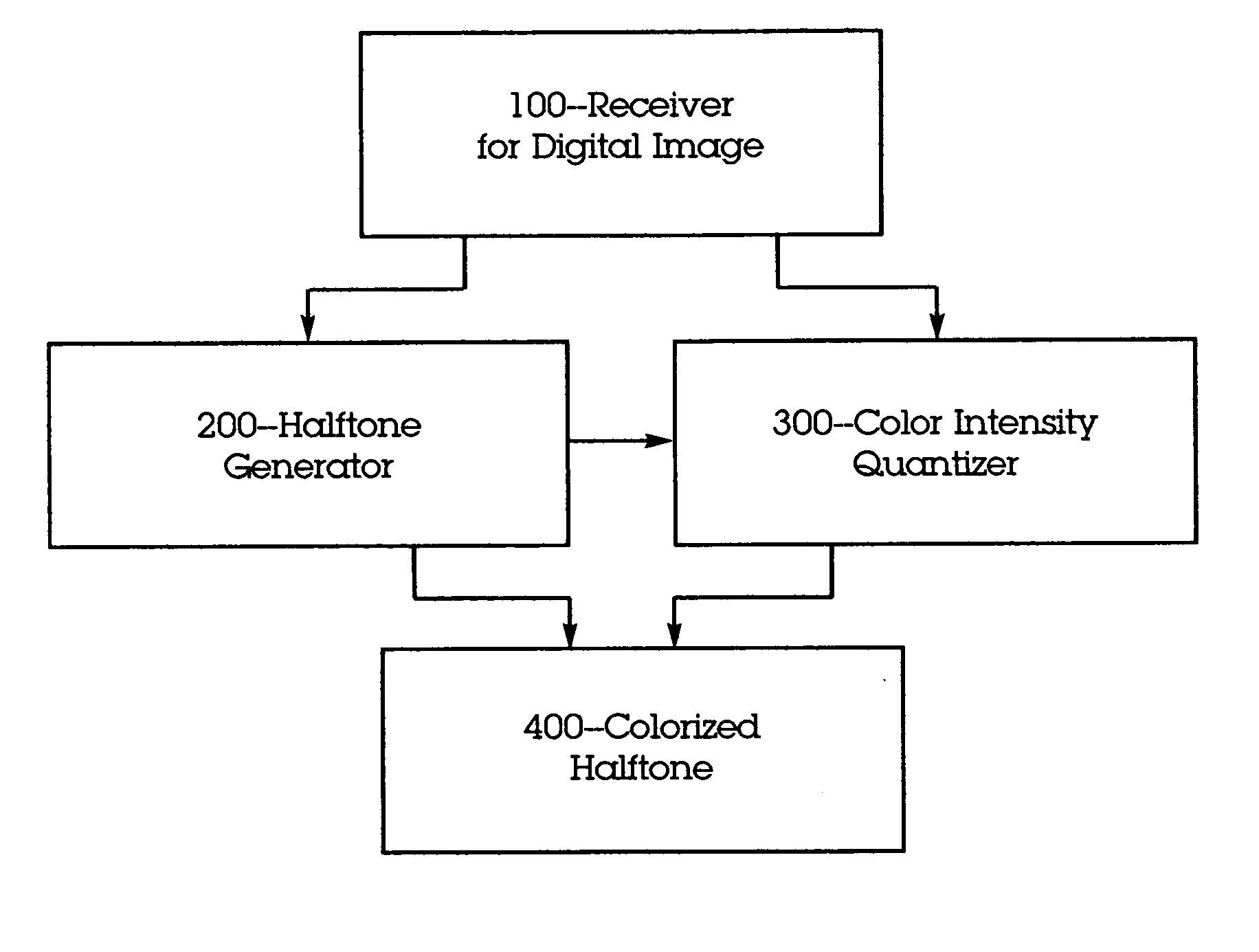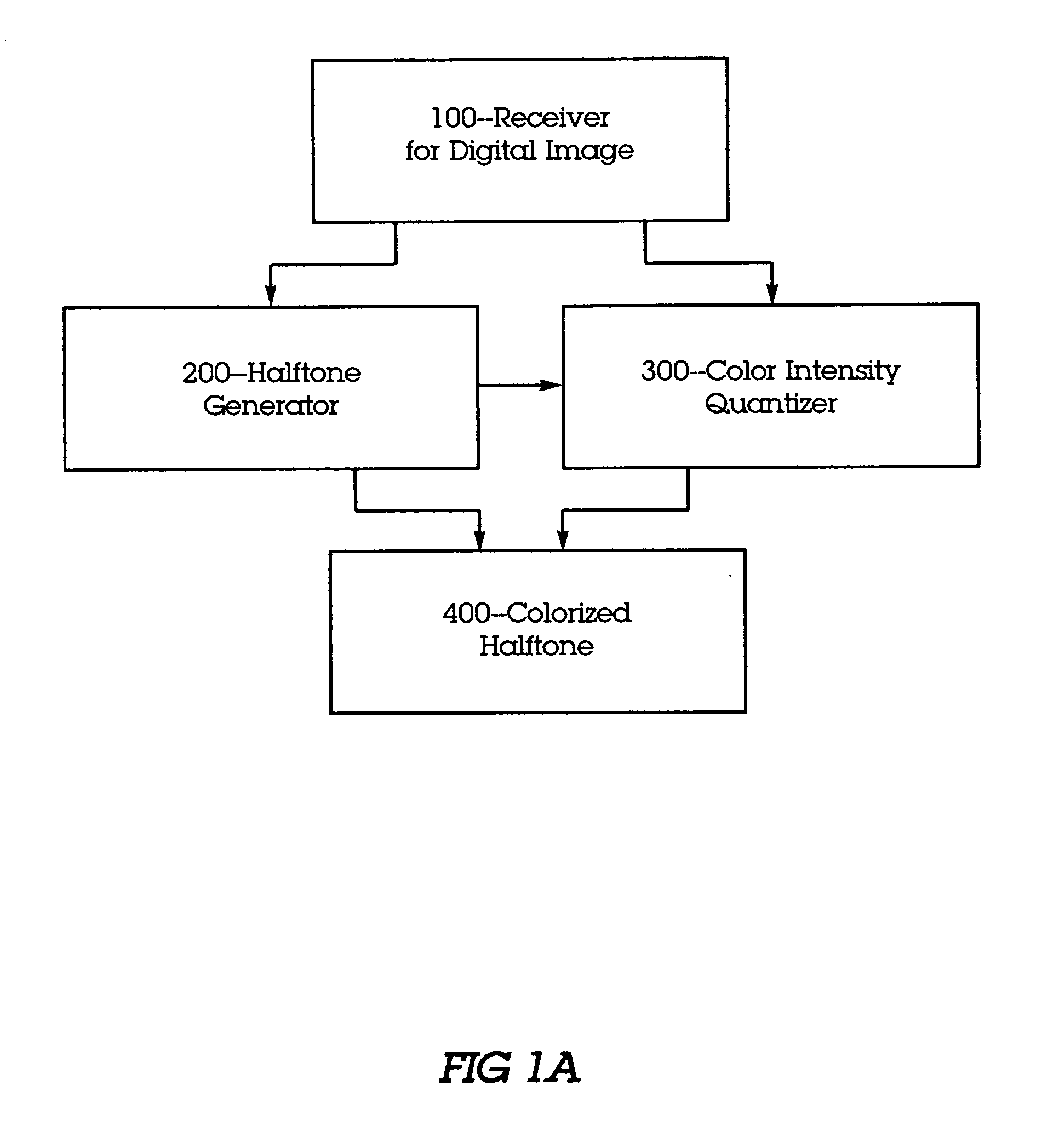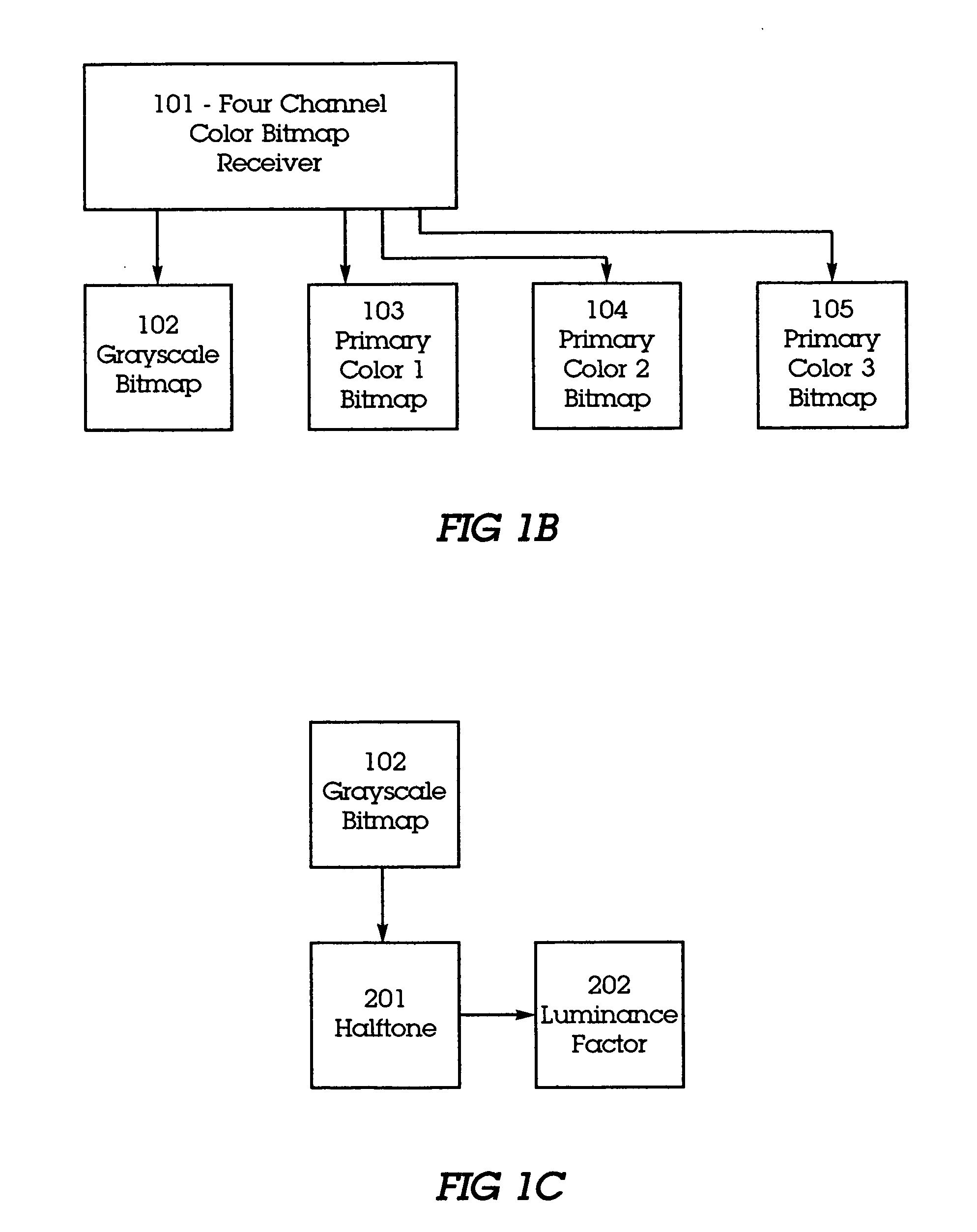Method for colorizing a digital halftone
- Summary
- Abstract
- Description
- Claims
- Application Information
AI Technical Summary
Benefits of technology
Problems solved by technology
Method used
Image
Examples
Embodiment Construction
Description—FIGS. 1A-E
[0050] A Receiver for Digital Image (100) receives a color image. The grayscale or luminance data is sent to a Halftone Generator (200). The color density data is sent to a Color Intensity Quantizer (300) along with halftone data from the Halftone Generator (200). The halftone data and the quantized color intensity data is combined to yield a Colorized Halftone (400).
[0051] The Receiver for Digital Image (100) system receives a Four Channel Color Bitmap (101) containing an input image's pixels with each pixel described by levels of grayscale and three primary colors. The Four Channel Color Bitmap's information is split into four separate bitmaps: the Grayscale Bitmap (102), Primary Color 1 Bitmap (103), Primary Color 2 Bitmap (104), and Primary Color 3 Bitmap (105).
[0052] The Halftone Generator (200) system processes the Grayscale Bitmap (102) information by any halftone method into a bi-level Halftone (201) in which the two colors are “black” and “transpar...
PUM
 Login to View More
Login to View More Abstract
Description
Claims
Application Information
 Login to View More
Login to View More - Generate Ideas
- Intellectual Property
- Life Sciences
- Materials
- Tech Scout
- Unparalleled Data Quality
- Higher Quality Content
- 60% Fewer Hallucinations
Browse by: Latest US Patents, China's latest patents, Technical Efficacy Thesaurus, Application Domain, Technology Topic, Popular Technical Reports.
© 2025 PatSnap. All rights reserved.Legal|Privacy policy|Modern Slavery Act Transparency Statement|Sitemap|About US| Contact US: help@patsnap.com



